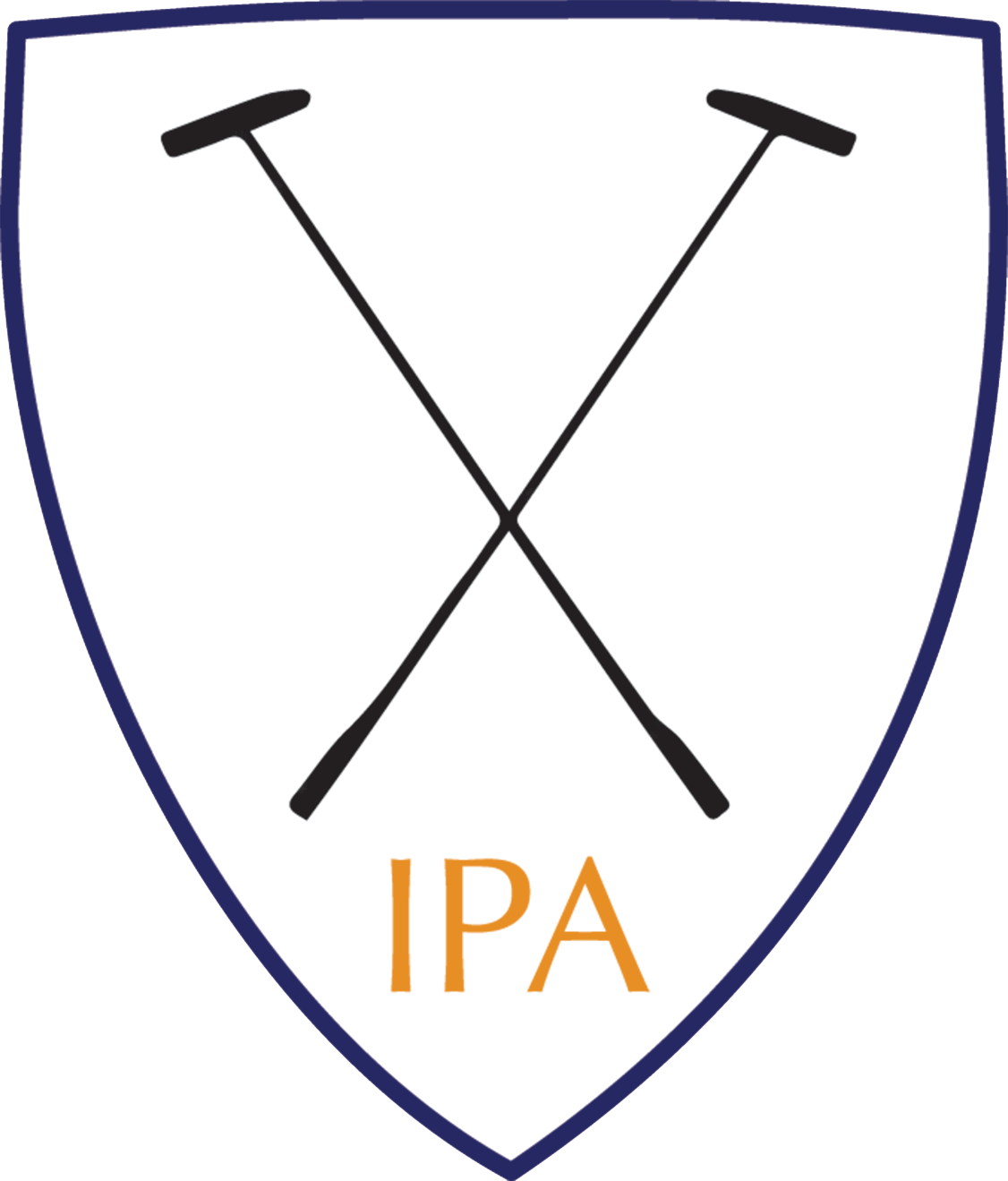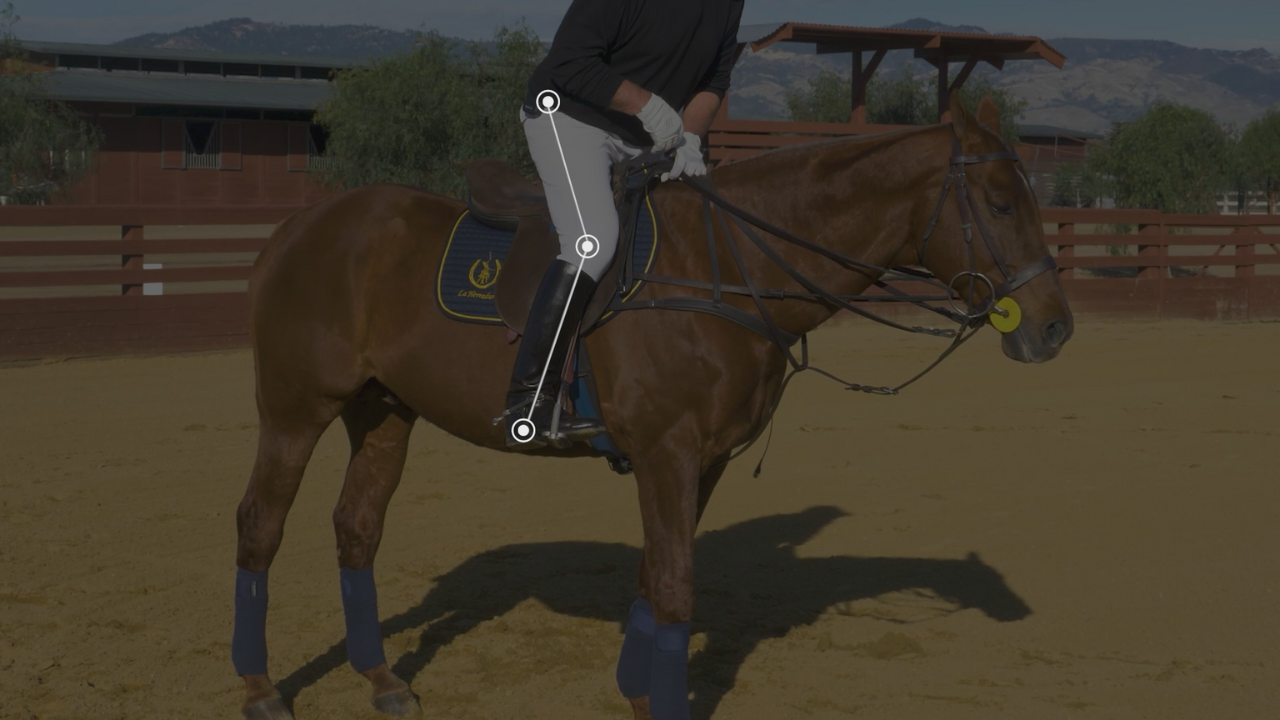Technique of Polo Position
The Polo position is the standard riding position players adopt when playing polo. 
The polo position is an athletic one upon the horses back, to execute it you must flex the knees slightly, have your weight on the balls of your feet and pinch the horses sides with your knees as you pull yourself into a half seat position with your backside in the air, hovering just above the horse.
- You must ensure that you have a direct line between your feet and shoulders so that you remain balanced on the horses withers.
Adopting this position when riding should allow you to maneuver the horse easier than if you have your weight back.
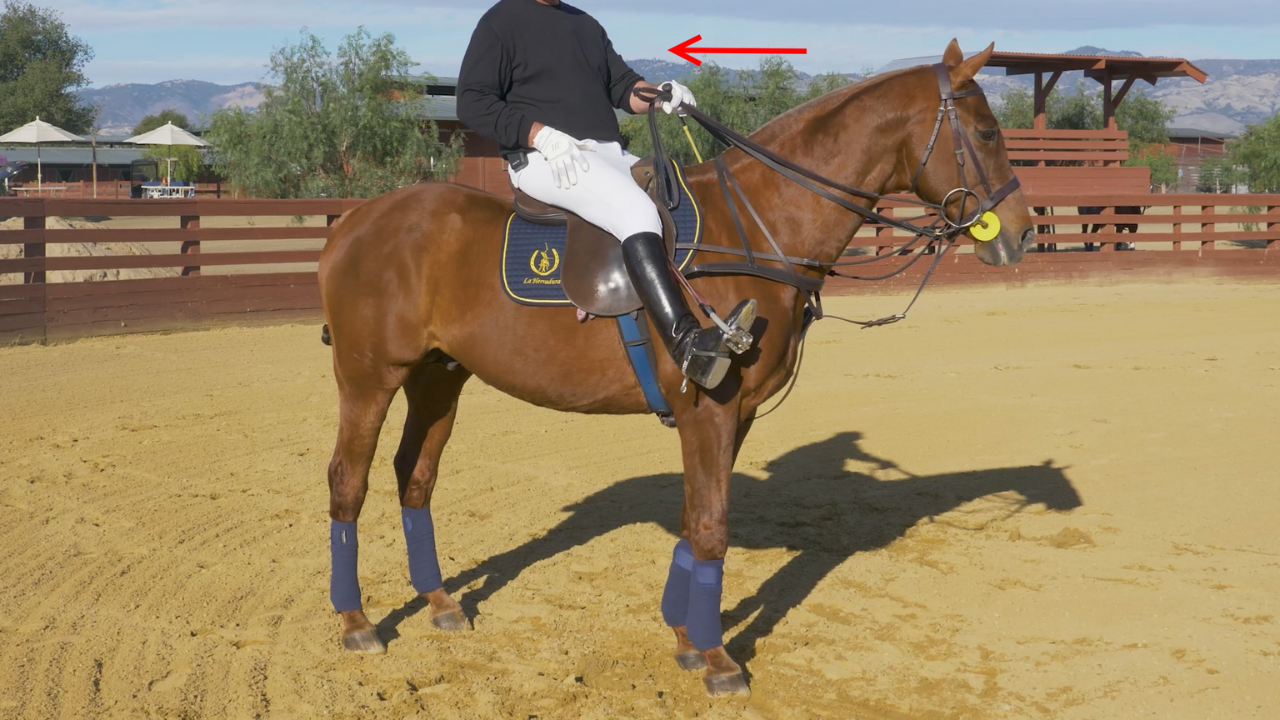
- If you sit back on the horse you end up behind it’s centre of gravity and instead of working in unison with the horse you end up fighting it, reducing its agility and speed.
- Lifting off the saddle into the half position, helps take the weight off the horse allowing it to freely move with speed around the pitch without you, as the rider, interfering with its movement. The half position also allows you to create a straight line from your shoulders to your feet, where you can be perfectly balanced on the horse's withers, allowing you to work together as one unit.
- It is therefore important to maintain this position during the game, take time to rest when the ball is dead but ensure you are set in the position as you approach the ball.
The polo position is considered the standard riding position in polo and should be adopted at all times when riding and turning. A beginner may struggle to hold the position all game and should therefore practice holding it to build strength and endurance in the legs. Due to the fast paced and end to end nature of polo, the polo position is important to master as it allows for fast turning, cantering, acceleration and top speed around the pitch, all of which can decide fine margins at the top level. Memo suggested that to be considered a top player you must have this position perfected.
Common Errors
There are common errors in executing the polo position that Memo Gracida pointed out when describing the technique.
Memo explained that the most common error he sees in players using the polo position, is leaning back on the horse. This is especially prominent in beginner players who lack the strength and muscle memory to hold the half seat position, it is characterised by players having their feet forward, pulling on the reins to help support themselves as their weight drifts towards the back end of the horse. This, as mentioned earlier, unbalances the horse and makes it less responsive and agile as the rider acts against, instead of with the horse's movements.
Memo discussed the key solutions to this error. They include:
- Practice holding the half position
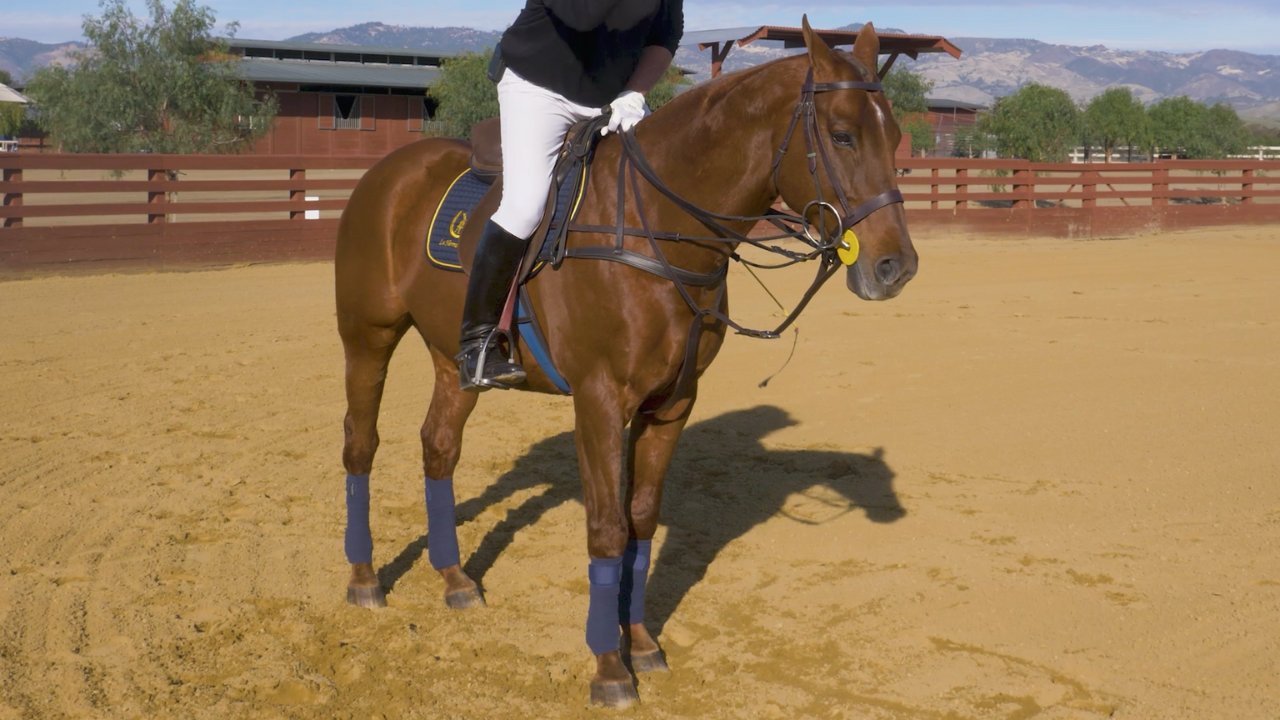
- A large factor in the technique of the polo position is the strength and muscular endurance/memory of an individual's legs. Therefore, players should practice holding the half position, trying to increase time to failure each time they attempt it to help build resistance to fatigue. Memo mentioned that this is something that can take months and years to train before a player can hold the position for a significant length of time, so requires patience and dedication to fully master.
- A large factor in the technique of the polo position is the strength and muscular endurance/memory of an individual's legs. Therefore, players should practice holding the half position, trying to increase time to failure each time they attempt it to help build resistance to fatigue. Memo mentioned that this is something that can take months and years to train before a player can hold the position for a significant length of time, so requires patience and dedication to fully master.
- Use your knees for stability
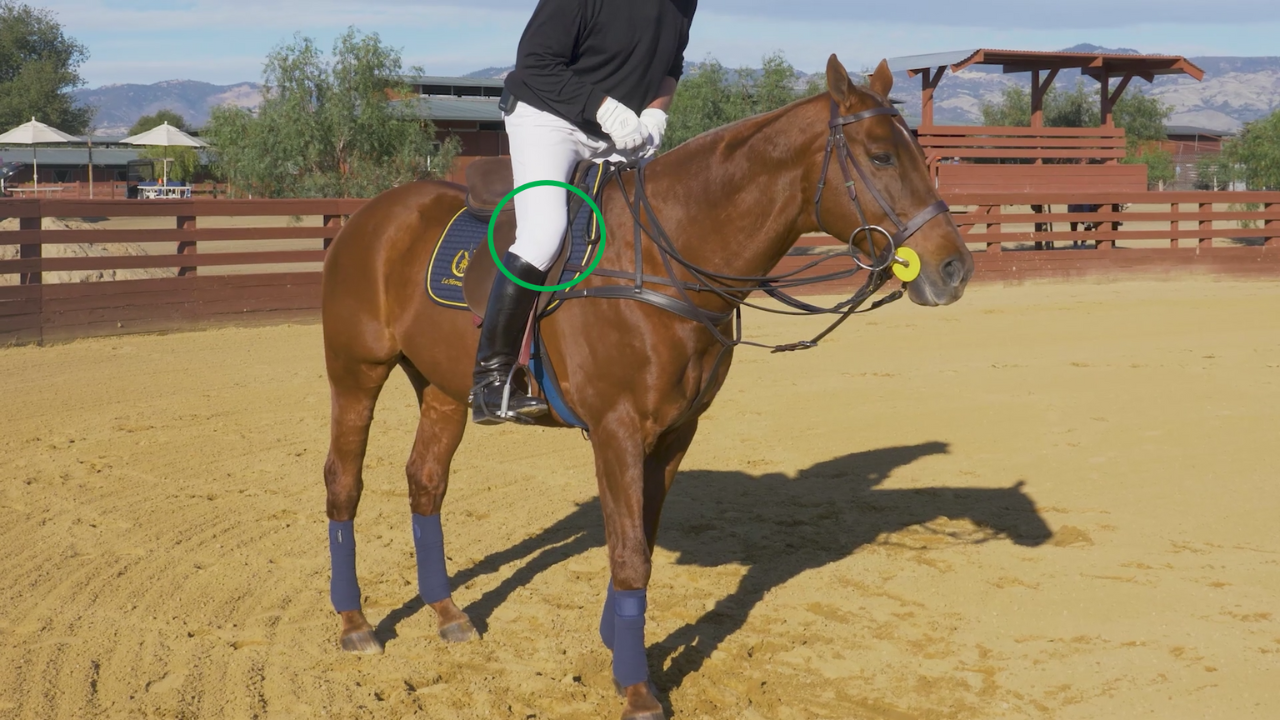
- A key factor to the common error is players attempting to balance themselves as they either set up incorrectly or begin to fatigue. A key teaching point that can help is pinching the horses sides with your knees, this stabilizes your lower half allowing you to, firstly pull yourself into the half seat position and then maneuver your body weight to over the horses withers. As a consequence, you should then be able to drive your heels straight down creating the straight line between your feet and shoulders, that has been preached by Memo throughout. As a result you’ll find yourself not having to pull on the riens for support and balance, allowing you to work in unison with the horse.
- A key factor to the common error is players attempting to balance themselves as they either set up incorrectly or begin to fatigue. A key teaching point that can help is pinching the horses sides with your knees, this stabilizes your lower half allowing you to, firstly pull yourself into the half seat position and then maneuver your body weight to over the horses withers. As a consequence, you should then be able to drive your heels straight down creating the straight line between your feet and shoulders, that has been preached by Memo throughout. As a result you’ll find yourself not having to pull on the riens for support and balance, allowing you to work in unison with the horse.
Key Teaching Points
The polo position is the primary riding position adopted during a game of polo.
For all players, Memo Gracida identified the key teaching points to focus on to improve your polo position.
- Pinch the horses sides

- This is perhaps the most important point to remember, as you lift yourself out of the saddle it is important to remain in contact with the horse through your knees. Feel as though you are pinching the sides of the horse with both knees, this will not only act as a stabilizer as you hover above the horse in the half position, but will also help you when pulling yourself into the half position in the first place.
- Keep your heels down
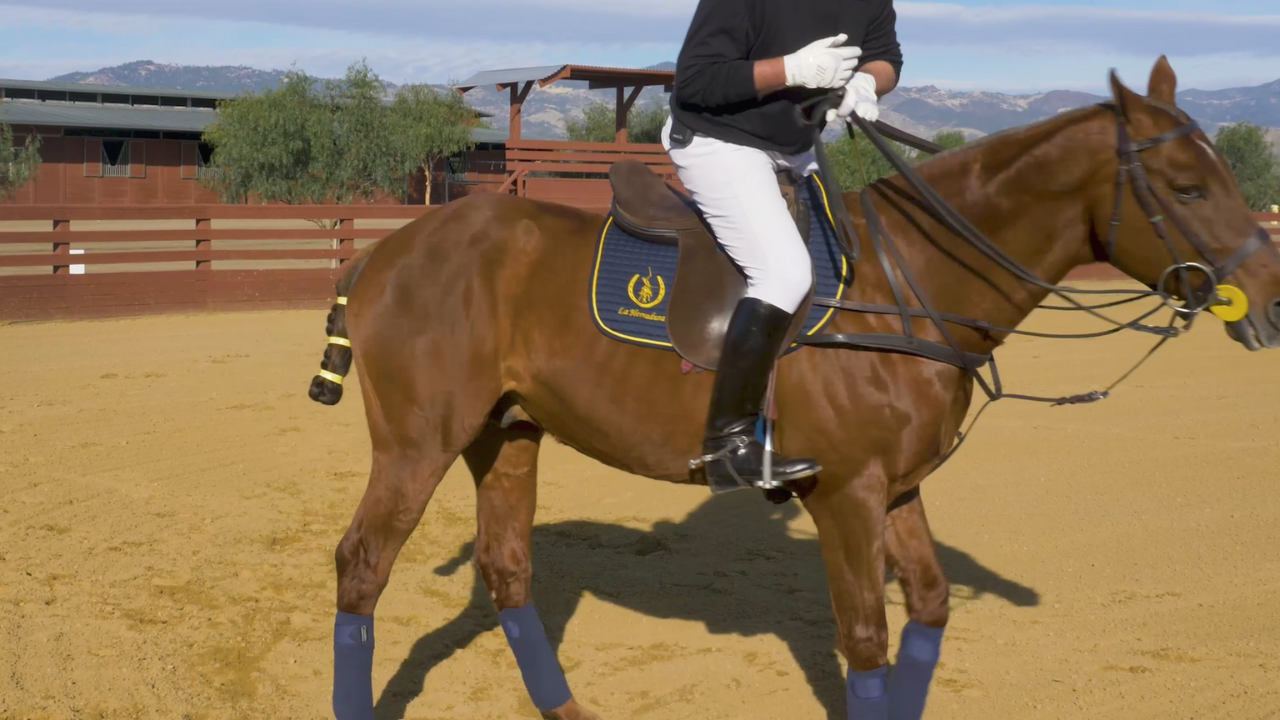
- While in the polo position drive your heels down into the stirrups of the horse, this will provide stability as you hover in the half position. It is important to not drive your feet forward or back but instead directly down, so you can create a straight line between your shoulders and feet where the weight is distributed evenly on the horse's withers.
- Maintain the half position

- The purpose of the half position is to take the weight off the horses back, allowing it to be more agile and responsive than if you remained seated. The difficulty is maintaining the position during the game and you should take time when the ball is dead to rest. The key to half position is ensuring you have your weight directly over the stirrups with a straight line running from shoulders to feet.
